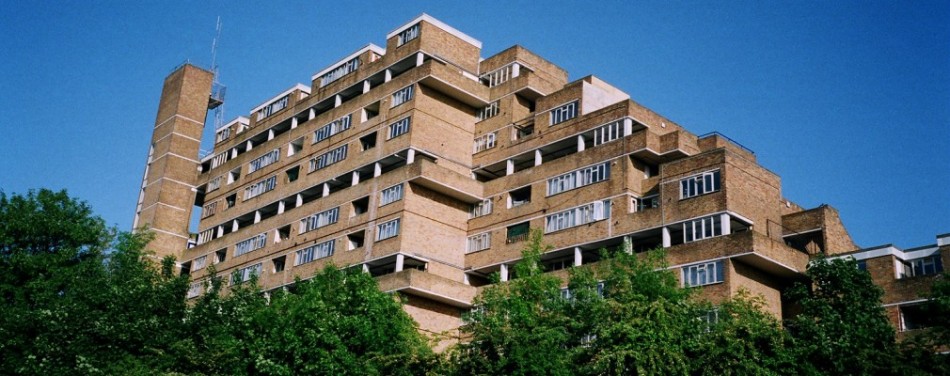Utopian Cities - Future Dreams
Wednesday 30th March 17:30 to 19:00
@ Anatomy Lecture Theatre, Summerhall, Edinburgh
part of Scotland’s Festival of Architecture 2016
Just to demonstrate that I am partaking of the full range of what the most excellent Festival of Architecture has to offer, some quick notes on one of their lectures.
The lecture is one of many, but was scheduled at a time and place that was easy enough for me to get to. It was in the Anatomy Lecture Theatre at Summerhall, which used to be the Royal Dick, the Edinburgh University Veterinary Medicine Department. The vets have all now moved to a new campus on the south of the city, and the venue has been lightly refurbished as a general arts venue. Most cities probably could not support such a range and number of venues, but Edinburgh is a festival city, and there seems no limit to the steady growth of arts culture and general festival-ness.
I think the event was one of many concurrent Science Festival Events, the reception staff were pleasant and happily accepted the printed version of my online ticket. We went into the lecture theatre, semi circles of steeply raked oak seats, peering down on the lecturers. The event was packed, but the venue probably held less than fifty people.
Utopia is a big topic, and there were two schools of thought. The first two speakers, Dr Diane Morgan and Dr Matthew Beaumont took a literary approach, stretching from Thomas More’s Utopia to the recent film London has Fallen. The Beaumont lecture was similar to one that is available online, check out the LSE Future Cities series. While, for me, there is some interest in the literary notion of utopia, looking back on stuff that people have already said will only ever take you so far.
There was a brisk and spirited piece by Richard Murphy, which presumably reflects his recent book Last Futures. In fact from what I have read of Last Futures it was written in the style of a textbook, while his lecture was far more engaging. He seemed to find something insightful and new to say about the overly familiar sixties and seventies.
For me the standout was the architect Kate MacIntosh, who adopted a distinctly humanist approach. This went beyond the usual tropes of good cities have bicycle lanes, to express genuine concern that our housing system is failing the people, and that real architecture should start from engagement with the people who will live in the houses. So that it is not just the narrow elite who can afford their own Grand Designs, but everyone that should be meaningfully involved the creation of the places where they will live.
I do not suppose that any architect or designer actually sets out to design something that is bad. But there should be a humility that the designer is at the service of the end user. All architects probably ought to pop round five years later for a cup of tea with their residents, just to learn what they got right and what they did not.
I don’t imagine that any one person can design utopia, it is not a destination, more a direction of travel, an exhortation to do your best. Much talk of utopia wrongly assumes that if you can just design it smart enough, then it will force the people to be happy and healthy. An architectural determinism, like the linguistics notion of the Sapir Worf hypothesis, whereby the structure of the language then determines the mindset of the speakers. Even the most grandiose of architects surely would not believe that they can design a city that forces an unwilling population to be healthy, happy, egalitarian and just.
But any true utopia won’t be built on a greenfield site. It will be built keeping the best of what is already there, involving those that live there already, enticing in those that do not. There are a lot of things that can go wrong, the architect’s perpetual bugbear of poor maintenance is one. But no architect can conceive or crystallise a perpetual utopia. It is a living breathing notion, responding to a myriad of changing circumstances.
The moment that resonated the most for me was a photo of Kate, standing in front of her Dawson's Heights, with some residents, and her proud remark that by all accounts it was a pretty good place to live. Surely that is the best that any architect can aim for.



No comments:
Post a Comment